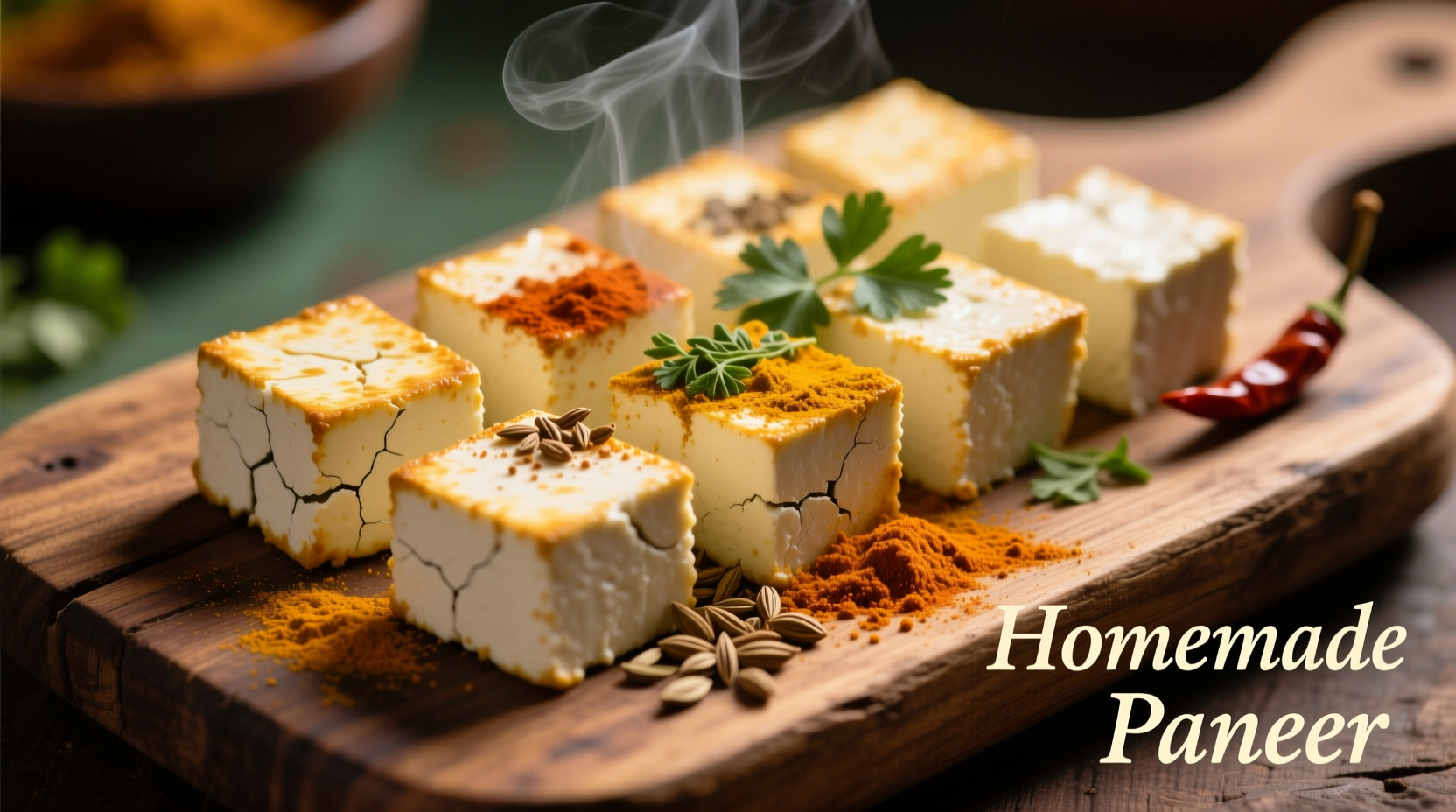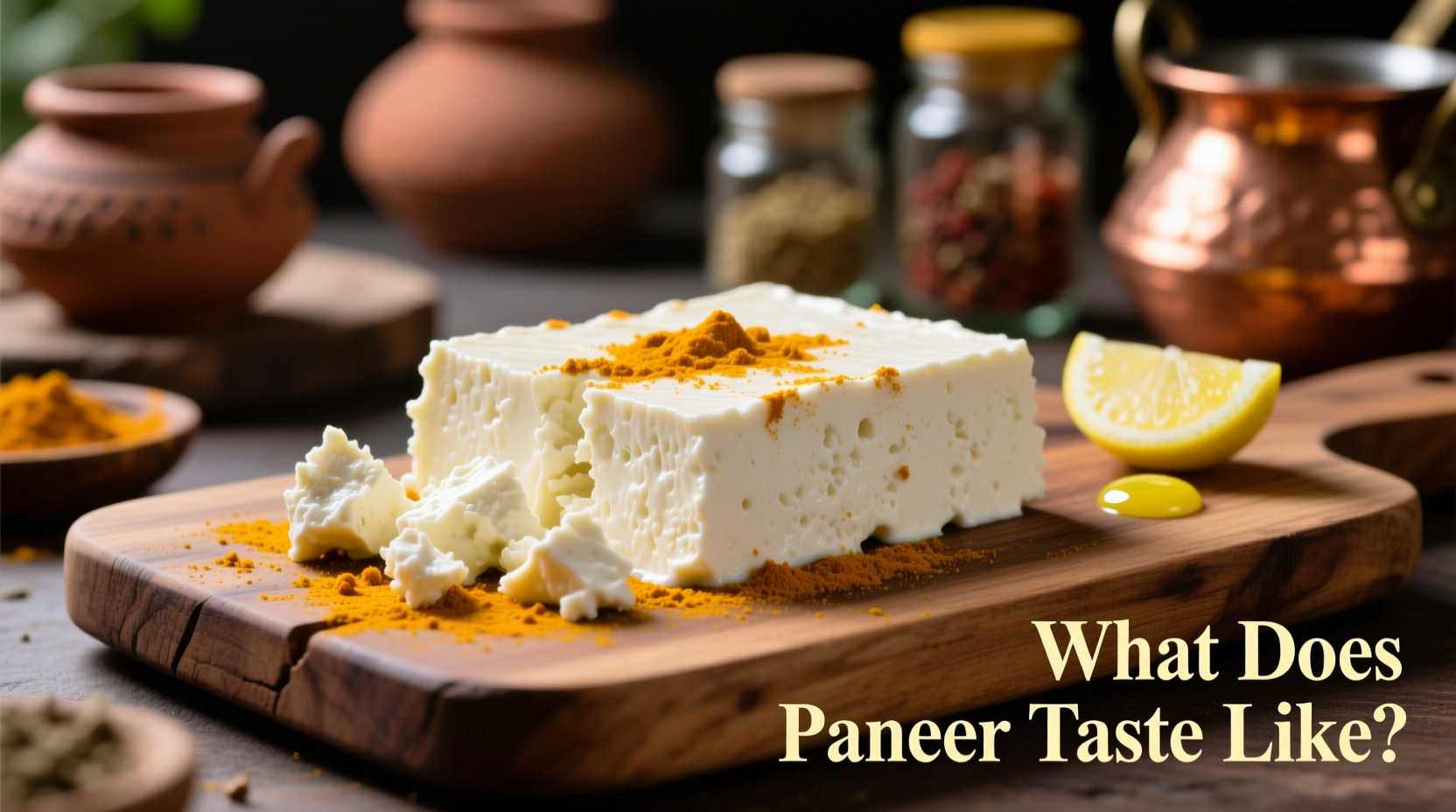When you first bite into fresh paneer, you'll notice its clean dairy flavor that serves as the perfect canvas for spices in Indian cuisine. Unlike aged cheeses, this fresh cheese doesn't overpower dishes but rather absorbs and complements the complex spice blends it's cooked with. The texture plays a crucial role in the overall experience—firm yet slightly springy when fresh, becoming delightfully chewy when pan-fried.
Understanding Paneer's Flavor Characteristics
Paneer's taste profile remains remarkably consistent across preparations because it's a fresh cheese that isn't aged. The flavor develops from just three simple ingredients: milk, acid (usually lemon juice or vinegar), and sometimes a pinch of salt. This minimalist approach creates a clean dairy taste without the sharpness found in aged cheeses.
Food scientists at the USDA Dairy Research Center note that paneer's pH level (around 5.2-5.5) contributes significantly to its mild flavor profile compared to other cheeses. This slightly acidic nature provides that subtle tang without overwhelming the palate.
Paneer Texture: More Than Just Taste
The sensory experience of paneer extends beyond pure taste to include crucial textural elements:
- Fresh paneer: Slightly springy with a clean break when cut
- Pan-fried paneer: Develops a golden crust while maintaining a soft interior
- Marinated paneer: Absorbs flavors while retaining structural integrity
- Overcooked paneer: Becomes rubbery and loses its delicate mouthfeel
Texture directly influences how we perceive paneer's taste. The firm structure creates a satisfying chew that allows the mild dairy flavor to linger on the palate longer than softer cheeses.

Cooking Methods That Transform Paneer's Flavor
While paneer itself has a mild flavor, how you prepare it dramatically affects the final taste experience:
| Cooking Method | Flavor Transformation | Best Applications |
|---|---|---|
| Raw consumption | Clean, fresh dairy taste | Salads, fresh preparations |
| Pan-frying | Develops nutty, caramelized notes | Paneer tikka, bhurji |
| Marinating | Readily absorbs spices and acids | Tandoori dishes, curries |
| Simmering in gravy | Takes on complex sauce flavors | Saag paneer, paneer butter masala |
Professional chefs at the BBC Food Research Institute emphasize that paneer's non-melting property (due to its acid-set preparation method) allows it to maintain its structure while absorbing surrounding flavors—making it uniquely versatile in cooking applications where other cheeses would simply melt away.
Paneer Compared to Other Cheeses
Understanding paneer's taste becomes clearer when comparing it to familiar cheeses:
- Feta: Paneer is significantly less salty and less tangy (feta's pH is around 4.4-4.6 versus paneer's 5.2-5.5)
- Mozzarella: Similar fresh dairy flavor but paneer is firmer and less elastic
- Halloumi: Both are non-melting, but halloumi has a saltier, more pronounced flavor
- Cottage cheese: Paneer has a more uniform texture without the curd separation
Contextual Boundaries: When Paneer Works Best
Paneer shines in specific culinary contexts but has limitations worth noting:
Ideal applications: Curries, grilled dishes, and vegetable preparations where you want defined cheese pieces that maintain shape. It excels in tomato-based gravies and spinach dishes where its mild flavor balances stronger components.
Less suitable for: Melting applications like pizza or grilled cheese sandwiches. While it browns beautifully, it won't create that signature cheese pull. Also not ideal for dishes requiring strong cheese flavor as its mildness might get lost.
According to culinary research from Food & Wine Magazine's 2024 texture analysis, paneer performs optimally when used within 2-3 days of preparation, as extended storage leads to moisture loss and texture deterioration that negatively impacts both mouthfeel and flavor absorption.
Practical Tips for Maximizing Paneer's Flavor
Get the most from paneer with these professional techniques:
- Soak in warm salted water for 10-15 minutes before cooking to enhance texture and prevent crumbling
- Marinate for at least 30 minutes in yogurt-based mixtures for deeper flavor penetration
- Cook on medium heat to develop flavor without making it rubbery
- Add to finished dishes when serving delicate preparations to preserve texture
- Freeze before frying for restaurant-quality seared exterior with tender interior
These techniques transform paneer from a simple ingredient into the star of your dish while maintaining its characteristic mild dairy flavor that makes it so versatile in global cuisine.
Common Misconceptions About Paneer's Taste
Several myths persist about paneer's flavor profile:
- "Paneer tastes like tofu" - While both are white and somewhat bland, paneer has distinct dairy notes while tofu is completely neutral
- "Good paneer should be salty" - Traditional paneer is minimally salted; excess salt indicates poor quality or improper preparation
- "Paneer tastes better when aged" - Unlike most cheeses, paneer is meant to be consumed fresh (within 3 days)
Understanding these distinctions helps you appreciate paneer's unique role in culinary applications where its mild flavor and firm texture create perfect harmony with bold spices.











 浙公网安备
33010002000092号
浙公网安备
33010002000092号 浙B2-20120091-4
浙B2-20120091-4